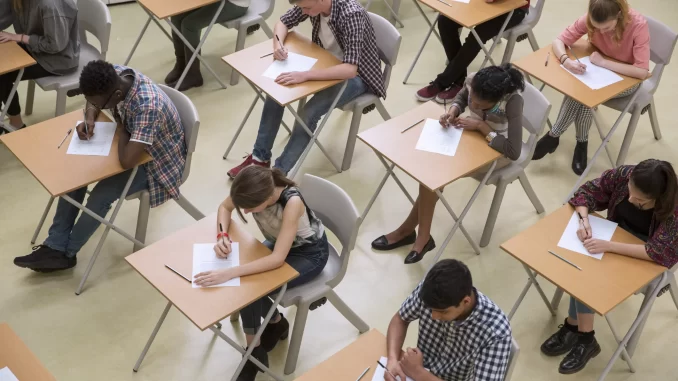
By Thomas Montana
A preliminary report from the New York State Department of Education showed that test scores for students in grades 3-8 were up across the board.
English Language Arts scores from Grades 3-8 increased from 46% last year to 53% this year. When broken down by grade, scores for Grade 3 rose significantly from 43% to 54%, Grade 4 scores jumped from 47% to 54%, and scores for Grade 6 increased from 44% to 57%. Grade 7 scores were up slightly from 50% to 51% and grade 8 scores stayed the same at 52%.
The report found that mathematics scores from Grades 3-8 moved up from 52% in 2024 to 55% last year. Grade 3 scores improved from 54% to 60%, scores for Grade 4 rose incrementally from 58% to 59%, Grade 5 scores saw a slight improvement from 49% to 50%, and Grade 8 increased from 41% to 47%.
However, not all scores were in positive territory. Scores for Grade 6 stayed the same at 51%, while Grade 7 scores decreased from 57% to 56%
Science scores of Grades 5 and 8 increased from 35% to 44% (these were the only grades tested). Grade 5 scores went up to 45% this year from 35% the previous year and scores for Grade 8 saw a double-digit increase from 34% to 44%.
Long Island Life & Politics reached out to the Suffolk County School Superintendents Association (SCSSA) and the Nassau-Suffolk School Boards Association (NSSBA) about the test scores.
“The preliminary results released by the New York State Education Department indicate that Suffolk County’s public schools are continuing to make progress in preparing students to meet and exceed grade-level expectations in English language arts, mathematics, and science,” the SCSSA said in a statement, adding that, since the results are preliminary, the data is “subject to change following the state’s verification process.”
“Across Suffolk County, our educators and support staff have worked tirelessly to provide high-quality research-based instruction, targeted interventions, and a strong foundation for student success,” the SCSSA continued. “Testing data are disaggregated on the school, grade, classroom, and individual student level and used to pinpoint areas of weakness. Targeted interventions and supports are then implemented to address problem areas.”
NSSBA Executive Director Bob Vecchio attributed the improvements to “the interventions post-COVID that our schools have undertaken.” But, despite the results, “we know there is work to be done and we will remain focused on doing that and close achievement gaps where they exist. Long Island hosts some of the best schools in the country where we review graduation rates and other performance measures and we expect that will continue.”

